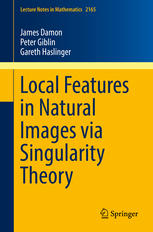

Most ebook files are in PDF format, so you can easily read them using various software such as Foxit Reader or directly on the Google Chrome browser.
Some ebook files are released by publishers in other formats such as .awz, .mobi, .epub, .fb2, etc. You may need to install specific software to read these formats on mobile/PC, such as Calibre.
Please read the tutorial at this link: https://ebookbell.com/faq
We offer FREE conversion to the popular formats you request; however, this may take some time. Therefore, right after payment, please email us, and we will try to provide the service as quickly as possible.
For some exceptional file formats or broken links (if any), please refrain from opening any disputes. Instead, email us first, and we will try to assist within a maximum of 6 hours.
EbookBell Team

4.0
66 reviewsThis monograph considers a basic problem in the computer analysis of natural images, which are images of scenes involving multiple objects that are obtained by a camera lens or a viewer’s eye. The goal is to detect geometric features of objects in the image and to separate regions of the objects with distinct visual properties. When the scene is illuminated by a single principal light source, we further include the visual clues resulting from the interaction of the geometric features of objects, the shade/shadow regions on the objects, and the “apparent contours”. We do so by a mathematical analysis using a repertoire of methods in singularity theory. This is applied for generic light directions of both the “stable configurations” for these interactions, whose features remain unchanged under small viewer movement, and the generic changes which occur under changes of view directions. These may then be used to differentiate between objects and determine their shapes and positions.